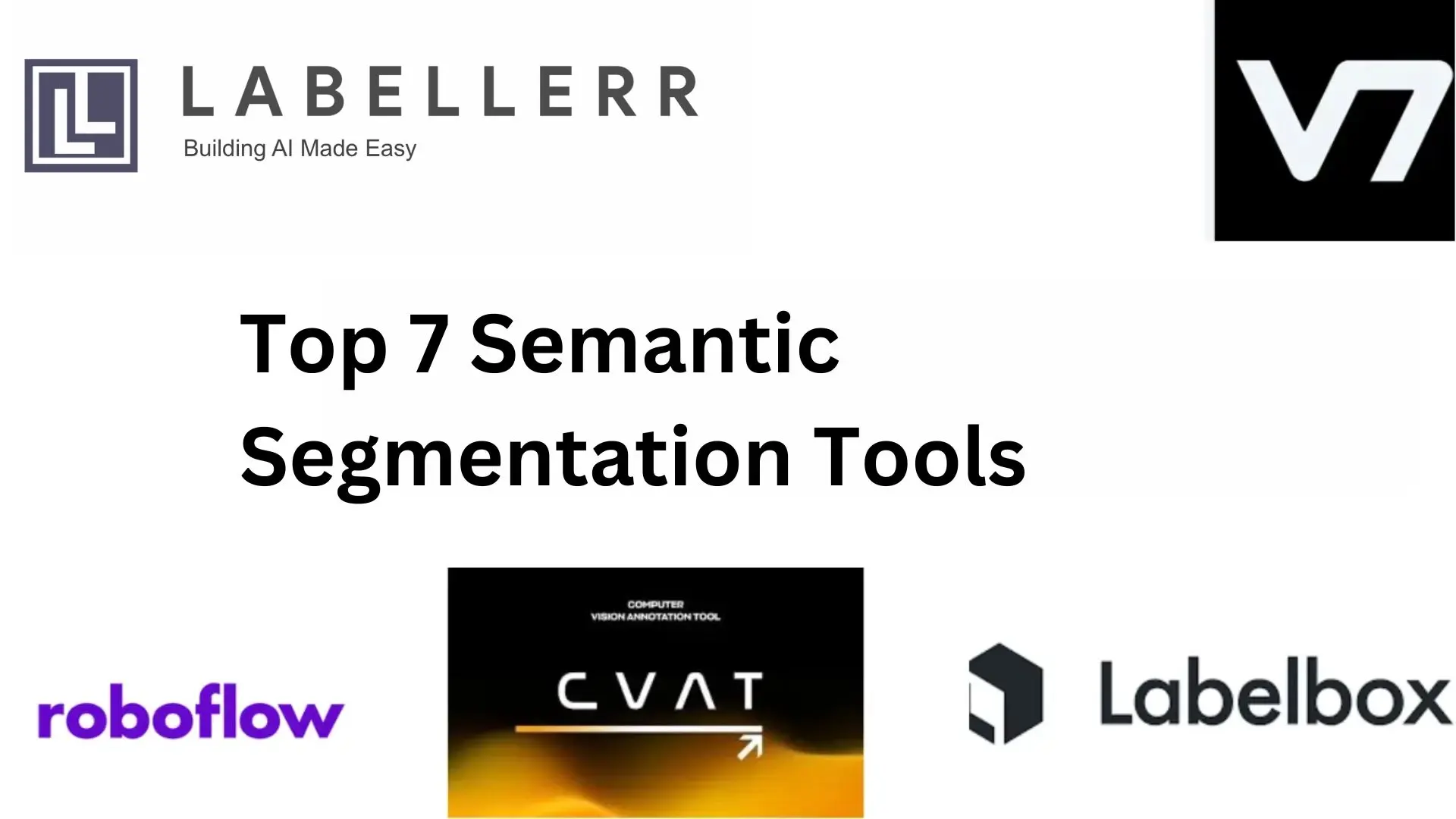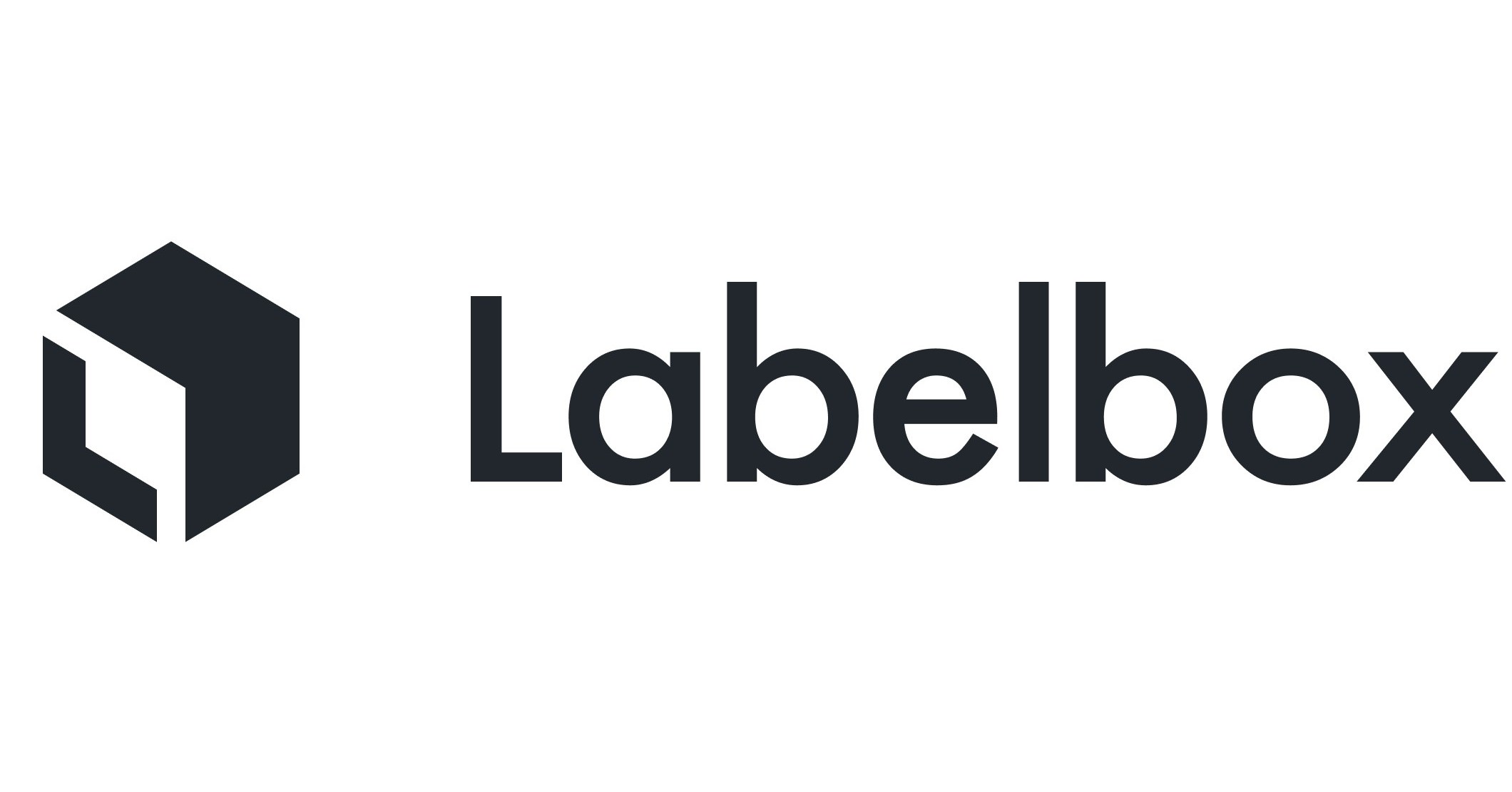7 Best Semantic Segmentation Tools in 2025
Explore top 2025 semantic segmentation tools for pixel-level image classification in computer vision. Features like high accuracy, ML integration, scalability, and security make tools like Labellerr, Roboflow, and CVAT essential for diverse applications.

Semantic segmentation is a fundamental task in computer vision, where the goal is to classify each pixel in an image into a predefined category.
This pixel-level classification allows for detailed scene understanding, making it a critical technology in fields like autonomous driving, medical imaging, satellite image analysis, robotics, and augmented reality.
In recent years, semantic segmentation has evolved significantly, driven by advances in deep learning and neural networks.
As semantic segmentation becomes more accessible, a variety of tools have emerged to streamline the development, training, and deployment of these models.
Table of Contents
- Features To Look For In Top Semantic Segmentation Annotation Tools
- Labellerr
- Roboflow
- Labelbox
- CVAT
- SuperAnnotate
- V7 Labs
- Encord
- Conclusion
- Frequently Asked Questions
Features To Look For In Top Semantic Segmentation Annotation Tools
When selecting semantic segmentation annotation tools, you need to consider a unique set of factors tailored to this specific type of task. Below are the critical features to guide your decision-making process:
1. Accuracy and Quality
The primary objective of a semantic segmentation tool is to produce precise and high-quality segmentations.
Ensure the tool employs advanced algorithms, robust AI models, and quality control mechanisms to ensure accurate results. Look for tools with proven performance and client feedback demonstrating their reliability.
2. Tool Capabilities and Annotation Support
Check if the tool supports a variety of semantic segmentation tasks. This might include support for multiple classes, overlapping segments, and hierarchical structures.
Ensure it has a comprehensive set of annotation tools, such as drawing polygons, automatic segmentation, class labeling, and visual aids like heatmaps.
3. Scalability and Performance
Semantic segmentation often involves large datasets. The tool should be able to handle significant volumes of data without sacrificing performance. Assess the tool's scalability— it should support cloud-based processing or distributed computing to speed up annotation tasks.
4. Integration with Machine Learning and AI
A good semantic segmentation tool should integrate seamlessly with machine learning workflows. It should offer features like pre-trained models, AI-assisted annotation, and compatibility with popular machine learning frameworks (e.g., TensorFlow, PyTorch). This integration can boost efficiency and accuracy.
5. Data Security and Privacy
Given the sensitivity of some data, the tool should offer robust security features, including encryption, secure access controls, and compliance with data protection regulations.
Tools with audit trails and logging features can help maintain transparency and accountability in the annotation process.
These features can guide you in choosing a key point annotation tool that meets your project's demands while providing a smooth and efficient workflow for your team.
6. Customization and Flexibility
Your annotation requirements may vary depending on the project. A flexible tool allows customization of annotation rules, class structures, and export formats. It should also be adaptable to new workflows or changing project needs without significant disruption.
7. User Interface and Usability
A user-friendly interface can dramatically improve the efficiency of annotation tasks. Look for a tool with an intuitive design, easy navigation, and helpful features like keyboard shortcuts, undo/redo functionality, and annotation templates. A user-centric approach can reduce training time and improve productivity.
8. Collaboration and Team Support
Semantic segmentation projects often involve teams. The tool should support collaborative workflows, allowing multiple users to work simultaneously, share annotations, and manage project-specific permissions. Features like real-time collaboration and version control are also essential for team-based projects.
9. Cost-Effectiveness
While quality is crucial, you must balance it with cost. Look for a tool that offers a range of pricing options, including subscription plans, pay-as-you-go, or enterprise licensing. Assess the cost relative to the tool's features and scalability to ensure it aligns with your budget.
10. Customer Support and Documentation
Reliable customer support and comprehensive documentation are critical for any annotation tool. Ensure the tool provider offers prompt and helpful support, including multiple contact options (email, chat, phone) and extensive documentation, tutorials, or community resources.
Semantic segmentation software is essential for detailed pixel-level image classification in computer vision, enabling applications such as autonomous driving, medical diagnostics, and satellite imagery analysis. These tools combine AI-driven automation with intuitive annotation features to improve accuracy and speed. Key capabilities include automated labeling via models like SAM, active learning loops, and collaborative annotation workflows.
Choosing the right segmentation software means prioritizing precision, scalability, integration with machine learning frameworks, and data protection. Labellerr exemplifies this by offering AI-assisted annotation, customizable quality control, and multi-tier pricing based on measurements, enabling efficient handling of large datasets.
By leveraging advanced segmentation software, organizations can accelerate model training and ensure reliable AI applications.
Here is the list:
1) Labellerr

Labellerr is a comprehensive semantic segmentation annotation tool known for its AI-powered capabilities.
It utilizes machine learning to assist with annotation, allowing users to leverage automation to streamline the annotation process. Labellerr also supports a wide range of data types and formats, providing flexibility for different projects.
The platform emphasizes collaboration, offering features for team-based workflows and real-time communication.
Additionally, Labellerr integrates seamlessly with popular machine learning frameworks, making it an excellent choice for those with existing AI workflows.
It also ensures data security with robust encryption and compliance with industry standards.
Pro-
- Feature-rich to perform faster segmentation with pixel perfection. Drag polygon, and auto bordering to avoid overlapping adjacent objects are very handy.
- Auto-labeling features like SAM, and active learning can accelerate all use cases when it comes to semantic segmentation.
- Professional team of annotators to handle a large volume of data with a fast turnaround time.
- Custom SLA starting from 24 hours for batch completion.
- 24*7 tool support for the Enterprise plan.
- A robust QA process can be configured based on the requirement. The most used processes are inter-annotator agreement, ground truth-based comparison with IOU metrics, model-assisted QA, generative AI-powered QA, and sample visual quality assurance.
- Dedicated account manager to manage the daily/weekly output.
- Comply with data privacy and security process of HIPAA, and GDPR.
- Multi-tier pricing option based on quality measurement available. The default QC process includes 1 round of annotation with 1 round of QC, however, based on quality parameters and other constraints it can be changed to match the expected output, timeline, and budget.
Con: Does not support point cloud and 3D data format yet.
Pricing: It has a Pro Plan that starts at just $499 per month with 10-user access. It also provides 50,000 data credits. Additional data credit can be purchased at just 0.01 USD per data credit and extra users can be subscribed at just 29 USD per user.
It has an enterprise plan as well which comes with professional services including tool customization and ML consultancy.
It provides manual annotation services starting at just $6 per hour.
2) Roboflow

Roboflow is a versatile platform that supports a variety of computer vision tasks, including semantic segmentation.
Its strengths lie in its simplicity and ease of use, making it accessible for both beginners and experienced users. Roboflow's drag-and-drop interface and comprehensive set of annotation tools allow users to create detailed segmentations quickly.
The platform offers extensive integration capabilities, connecting with major machine learning frameworks and services, and facilitating a smooth workflow. Roboflow also provides extensive tutorials and documentation, aiding users in getting started quickly.
Its flexible pricing structure makes it suitable for projects of various sizes and budgets.
3) Labelbox

Labelbox is a popular semantic segmentation annotation tool favored for its scalability and enterprise-grade features.
The platform supports complex annotation tasks and provides advanced project management capabilities, allowing teams to handle large-scale projects efficiently. Labelbox's collaboration tools are robust, enabling multiple users to work on the same project with granular permissions and real-time updates.
It also offers automation features to speed up annotation, which can significantly reduce the time needed for large datasets.
Labelbox prioritizes data security, offering enterprise-grade encryption and compliance with data protection regulations.
It is a strong choice for teams looking for a high level of customization and control over their annotation workflows.
4) CVAT

CVAT (Computer Vision Annotation Tool) is an open-source semantic segmentation annotation tool designed for versatility and scalability.
It's favored for its flexibility and extensive customization options, allowing users to adapt the tool to their specific annotation needs. CVAT supports a wide range of annotation types, including semantic segmentation, and is equipped with various advanced features like interpolation and tracking for video annotation.
Being open-source, CVAT is freely accessible and has a strong community backing, providing continuous improvements and a wealth of user-generated plugins.
Its flexible integration with other platforms and frameworks makes it a popular choice for teams seeking a customizable and cost-effective solution.
5) SuperAnnotate

SuperAnnotate is a comprehensive annotation platform that offers a wide range of annotation tools, including semantic segmentation, with a focus on AI-assisted annotation.
The platform employs machine learning to accelerate the annotation process, allowing users to generate segmentations more quickly and accurately.
SuperAnnotate supports collaborative workflows, making it suitable for team-based projects, with features like real-time collaboration and role-based access controls.
The platform also offers robust data security, ensuring compliance with data protection regulations.
Additionally, SuperAnnotate provides extensive customer support and training resources, making it a user-friendly option for both small teams and large enterprises.
6) V7 Labs

V7 Labs is a high-performance annotation tool designed for computer vision tasks, including semantic segmentation.
It stands out for its AI-powered automation features, which help streamline the annotation process. V7 Labs provides tools for creating detailed segmentations and supports a wide variety of data formats.
The platform offers collaborative features that enable multiple users to work on the same project simultaneously, with built-in version control and project management capabilities.
V7 Labs integrates with popular machine learning frameworks, allowing users to incorporate AI models into their annotation workflows.
The platform also prioritizes data security, with robust encryption and adherence to industry standards, making it a reliable choice for businesses and research teams.
7) Encord

Encord is an advanced annotation platform designed to support complex semantic segmentation tasks, with an emphasis on AI and automation.
The platform features a user-friendly interface that simplifies the annotation process, while its AI-assisted tools can automatically generate segmentations to accelerate workflows.
Encord offers robust collaboration features, allowing teams to work together seamlessly and track changes through version control.
The platform is designed with security in mind, providing strong encryption and compliance with major data protection regulations.
Encord also integrates with common machine learning frameworks and allows users to create custom workflows, making it suitable for a variety of projects.
Its scalability and support for various data formats make it a versatile choice for both small and large teams.
Conclusion
Selecting the right semantic segmentation annotation tool is critical for achieving accurate and efficient results in your computer vision projects.
With a variety of tools available, it's essential to consider your specific project needs, the scale of your operations, and the capabilities required to ensure success.
When choosing a tool, prioritize key features such as accuracy, scalability, integration with machine learning frameworks, data security, and collaboration capabilities.
It's also important to assess the tool's ease of use, level of customization, and cost-effectiveness to ensure it aligns with your project's goals and budget.
Ultimately, the best semantic segmentation annotation tool for you will depend on your unique requirements, whether you're working on a small-scale project or managing large datasets with complex workflows.
By carefully evaluating the tools' features and understanding how they fit into your broader computer vision strategy, you can make an informed decision that leads to successful and efficient semantic segmentation outcomes.
Labellerr offers flexible pricing plans, expert annotation teams, and AI-powered automation, including SAM, to deliver high-quality segmentation quickly. Contact Labellerr today for a free demo and accelerate your computer vision projects.
Frequently Asked Questions
1. What is semantic segmentation in computer vision?
Semantic segmentation is a process in computer vision where each pixel in an image is classified into a specific category or class. This results in a segmented image where regions of similar properties or objects are identified and labeled.
2. What are some common applications of semantic segmentation?
Semantic segmentation is used in a variety of applications, including autonomous vehicles, medical imaging, satellite image analysis, agricultural monitoring, and industrial inspection. It allows for a detailed understanding of scenes by distinguishing between different objects or regions.
3. What features should I look for in a semantic segmentation annotation tool?
When choosing a semantic segmentation annotation tool, consider the following features:
- Accuracy and quality: The ability to produce precise annotations.
- Tool capabilities: Support for various segmentation tasks and data formats.
- Scalability: Capacity to handle large datasets and complex projects.
- Data security: Strong encryption and compliance with data protection regulations.
- Customization: Flexibility in annotation rules and export formats.
- Collaboration: Tools that support team-based workflows and real-time collaboration.

Simplify Your Data Annotation Workflow With Proven Strategies
.png)


